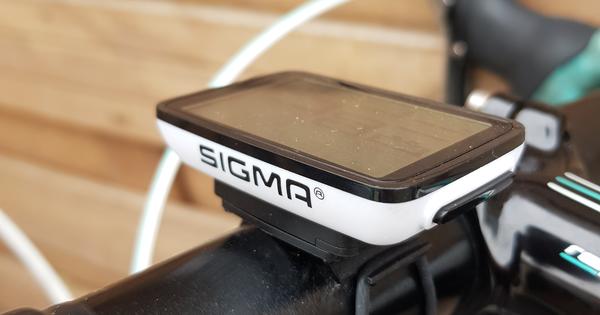The Huawei Mate Xs is one of the first foldable smartphones that you can buy in the Netherlands. The device folds out at the push of a button into a tablet the size of an iPad Mini. Sounds cool, but costs 2499 euros. In this Huawei Mate Xs review we find out how well the 2-in-1 device works.
Huawei Mate Xs
MSRP € 2499,-Colors Dark blue
OS Android 10 (EMUI)
screens 6.6" OLED (2480 x 1148), 8" (2480 x 2200), 6.38" (2490 x 892)
Processor 2.86 Ghz octa-core (Kirin 990 5G)
RAM 8GB
Storage 512GB (expandable)
Battery 4,500 mAh
Camera 40, 16 and 8 megapixel + ToF sensor (rear, also for selfies)
Connectivity 5G, Bluetooth 5.0, Wi-Fi, GPS, NFC
Format 16.1 x 7.9 x 1.1cm
Weight 300 grams
Other Foldable display, no Google certification
Website www.huawei.com/nl 5.5 Score 55
- Pros
- Excellent specifications
- Innovative concept
- Negatives
- Quality folding screen
- No Google certification
- No wireless charging
- Not waterproof and dustproof
Huawei presented the Mate Xs at the end of February and released the foldable phone in the Netherlands in mid-April. The suggested retail price is 2499 euros and the device is only for sale via the website and a handful of MediaMarkt stores. The Mate Xs is the second phone that aims to be both a smartphone and a tablet. Samsung had the scoop earlier this year with the Galaxy Fold of 2020 euros. Devices like the Galaxy Z Flip and Motorola Razr fold vertically and can only be used as a smartphone. In this Huawei Mate Xs review, I therefore only compare the device with the Fold (review).
This is how the folding design works
When you pick up the Mate Xs for the first time, you have the idea that you have a thicker and heavier smartphone in your hands. When folded, the device uses a 6.6-inch full-HD screen without significant bezels and is therefore the same size as the average modern phone.
The back of the Mate Xs consists of a 6.36-inch HD display that serves as a viewfinder. If you use the device in phone mode and want to take a selfie, turn it over. The front has no camera, there are four on the back. A red button is also visible under the quadruple camera. By pushing it in, the screen pops off and you fold it counterclockwise until it's rotated 180 degrees. The two screens (front and rear) turn out to be one 8-inch full-HD OLED screen.






The folding is a special experience for the first few days and works well. You have to exert quite a bit of force and – because of the size of the device – you need two hands. The hinge feels sturdy and is still free of dirt after two weeks of testing. However, due to the folding construction, it was not possible to make the Mate Xs water and dust resistant. That is understandable, but it is a serious concern. The Fold is also not waterproof and dustproof.
After two weeks of use, I believe that Huawei's two-in-one concept is smarter than the Fold's design. It has a relatively small 4.6-inch HD display at the front with huge bezels above and below the screen. If you unfold the Fold like a book, you look at a separate 7.3-inch full-HD screen with a camera notch. The Mate Xs offers a larger screen in both smartphone and tablet mode, without old-fashioned-looking bezels and camera notch.



Plastic screen has drawbacks
Although the Mate Xs is cleverly designed, I find the screen disappointing in terms of quality. Because glass does not fold, the smartphone has a plastic display. The disadvantages of plastic are quite noticeable. You can press the screen with your finger, the material is highly reflective and more sensitive to fingerprints and dust. In tablet mode you can see and feel the fold of the screen vertically in the middle. That is logical and you get used to it, but it remains a point of attention.
Worse is the degree to which the screen scratches. Plastic scratches faster than glass, which is why Huawei has stuck a special and clearly visible screen protector on the display. The manufacturer warns not to remove the screen protector. When I received my Mate Xs, it had already been used by other people for a few weeks. I don't know how they treated the device, but the front and back screens showed countless smaller, permanent pits and scratches in the screen protector. After two weeks of careful testing, I see even more scratches. That is not positive. Huawei will replace the screen protector once at no cost, after that you have to pay.

The fact that the display scratches so quickly in a short time will partly be because you always place the folded device on one of its two screens. Normally you can put a cover on the back of your device, but that is not possible in this case. Huawei puts a bumper case in the box, but it protects too little.
Apps on the big screen
The 6.6-inch screen on the front of the Mate Xs shows apps as they were intended: in smartphone mode. The programs work properly. If you unfold the phone to tablet size, it appears that most apps jump neatly and fill the entire screen. On the Fold, more apps crashed or stuck on the smaller size. The Mate Xs handles it better - for reasons that are unclear to me - but suffers from the same problem as the Fold: Android apps and games are not designed for a square aspect ratio. In tablet mode, almost all apps work the same as on a phone screen, but everything looks a bit bigger.

Apps that make more useful use of the extra screen space on a normal Android tablet, don't do that on this device. This is especially unfortunate with apps that show a lot of text, such as news and newspaper apps. Video apps like YouTube also don't take advantage of the aspect ratio and show large borders around your video. Netflix doesn't work at all, more about that in a moment. Other programs, including the browser, gallery app, settings and Spotify, do make optimal use of the larger, square display.
Conveniently, you can use two apps at the same time by conjuring up a second app via a special bar. You can use the second app floating above the full screen app or run the two apps side by side. However, the latter only works if both apps are suitable for it and that is far from always the case.

Excellent specifications
The Mate Xs impresses with its hardware. The device receives power from two 2250 mAh batteries, together good for a capacity of 4500 mAh. Not particularly big for a device with two high-resolution screens, but with mixed use the battery lasts a long day. That's better than I expected. Included in the box is a 65W adapter that charges the Mate Xs at 55W (yes, 55). That is very fast: in half an hour of charging, the battery climbs from 0 to 84 percent. Wireless charging is unfortunately not possible – I suspect it is still too complicated to place a charging coil in the foldable housing.

The Mate Xs is lightning fast to use, which is thanks to the Kirin 990 chip. It works together with 8GB of RAM. More than enough now, but with an eye to the future and the folding concept, 12GB would have been nicer. Considering the price tag of 2499 euros, 8GB is also a bit scanty; there are enough 999 euro smartphones with 12GB of RAM. The storage memory of the Mate Xs is particularly generous with 512GB, and can also be increased with an NM card.
The device is suitable for 5G internet, but only supports all 5G bands that Dutch providers will use later this year after a software update.
The quadruple camera (normal, wide angle, zoom and depth sensor) takes excellent photos during the day and in the dark. The quality is comparable to the Huawei P30, which came out in 2019 for 749 euros and now costs 449 euros. Zooming a few times produces some dark images and the maximum zoom function (thirty times) is especially nice to try out a few times. It should be clear that the cameras of the Mate Xs cannot match Huawei's P40 Pro or other regular top smartphones in any way.
Below you see two photo series with from left to right: normal, wide angle, 3x zoom, 30x zoom.








Software is limited
The biggest flaw of the Mate Xs is not related to the hardware or price, but to the software. Due to a trade ban, Huawei is not allowed to install the Google certified Android version on its foldable device. The Mate Xs therefore uses an Android 10 variant without Google apps, the Play Store and Google Mobile Services. Huawei is now familiar with this: the Mate 30 Pro (review) and P40 Pro (review) use the same Google-less software. Basically, it means you can't use Google apps in an official way and have to install other apps from Huawei's AppGallery store. It's still very empty. Apps such as Netflix, NLZiet and Tinder can therefore not be used at all.


The AppGallery mainly contains fake apps, aimed at popular services such as WhatsApp. The several dozen well-known apps that are included often do not work properly because they have not yet been adapted for a device without Google certification. Examples are ToDoist, Buienalarm, Booking.com and 9292. There are also doubts about the update policy of the device. Normally, Google and Huawei work together on Android updates for Huawei devices, but the manufacturer is now on its own. All these drawbacks make the Mate Xs particularly difficult to use. Too bad, because the device can't do anything about this.
Huawei puts its well-known EMUI shell over the Google-less Android software. EMUI is visually radical, installs many apps and contains all kinds of functions to extend the battery life, for example. The problem is that the software still uses some weird translations after all these years. I got the message 'Updating system parameters' to update the software, to name an example.


Conclusion: buy Huawei Mate Xs?
The Huawei Mate Xs is a special smartphone in every way. It's crazy expensive, lacks a Google certification and folds out into a tablet. A very nice glimpse into the future, but hardly anyone buys this device. Huawei also knows this and produces the Mate Xs mainly to gain experience and to make future foldable devices better and cheaper. I'm hoping for a sturdier screen.
In addition, to make the next foldable phone more interesting, Huawei must get app developers to adapt their programs for the different aspect ratio and arrange a Google certification. So there is still a lot of work to be done, but this first generation is a good starting point.
Samsung has a formidable competitor. The Fold is inferior in concept to the Mate Xs, but would be followed this fall by a Fold 2. It will reportedly get a new design, better specifications and a lower price. It should be clear: the battle for the best foldable phone has only just begun.

